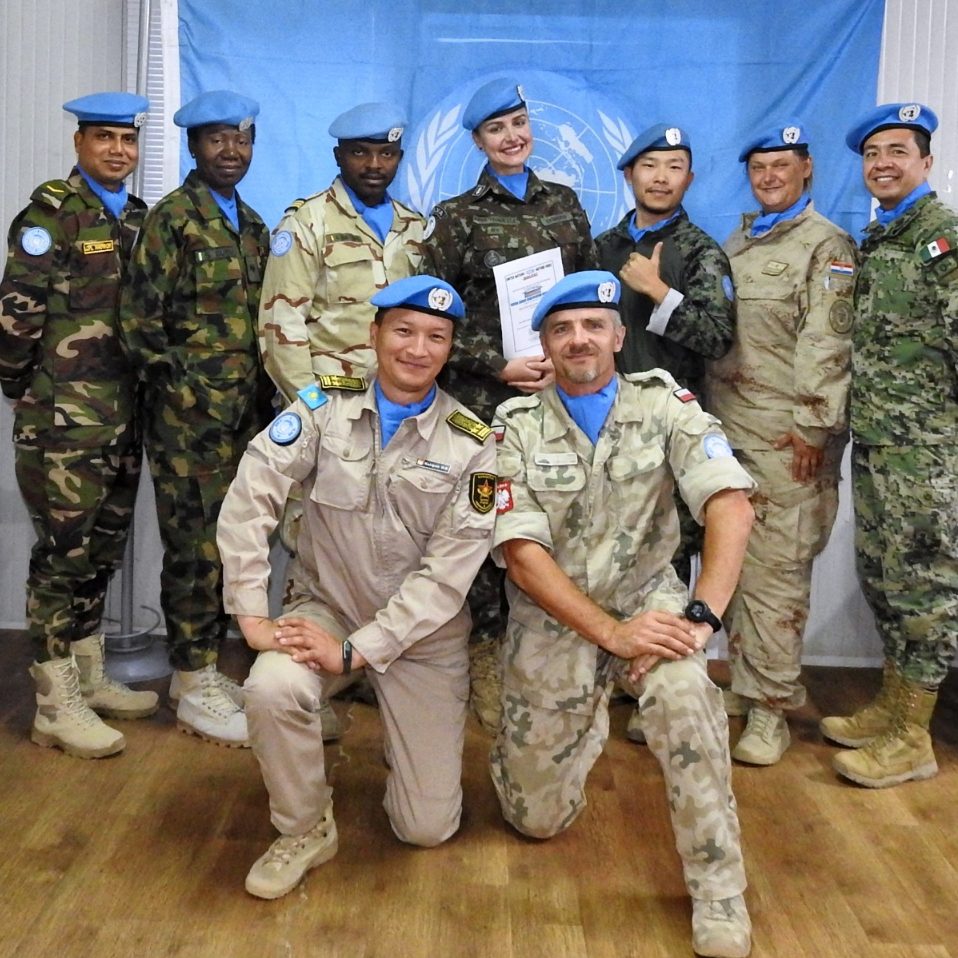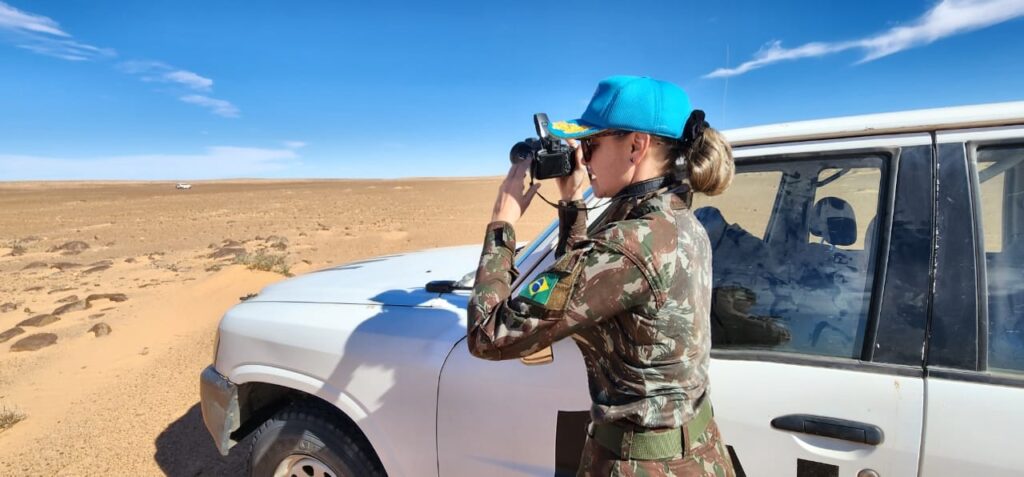Brasília (DF) – It is not new that Brazilian military engineering contributes to the UN peacekeeping mission in Western Sahara. Since 2010, MINURSO (United Nations Mission for the Referendum in Western Sahara) has had military personnel trained by the Military Engineering Institute (IME) in its cadre of military observers. Currently, MINURSO has Major Nina Figueira, deployed in 2022. A cartographic engineer of the Brazilian Army, her work has made possible the execution of a fundamental mission for MINURSO. With expertise in Geographic Information Systems, Geointelligence, Command and Control, she contributed to the success of the first logistical transposition of Berma after November 2020, when the ceasefire was broken.
The Berma or “Sahara Wall” is a region that divides a contested territory between Morocco and the Sahrawi people of Western Sahara. A sandy area surrounded by landmines, the Berma region can only be traversed under authorization from the warring parties – permission that MINURSO obtained for resupply missions, called logistical administrative deployment.
The Chief of Staff of the Force, MINURSO, Colonel Bryant Rogers, spoke about the work performed by the engineer. “She excelled in the operational missions during the logistical administrative shift III, preparing the geospatial data during the planning phase and updating the real-time location of the convoy after its start. Taking into account her technical expertise, she was selected to participate in the convoy of the logistical administrative shift IV, which transited Berma and the Buffer Zone and completed the mission of resupplying the remote teams.”
The first convoy took place in March 2023. In the second, in April, as part of the convoy, Major Nina led the navigation on the ground and the operation of the convoy with the map she designed herself. It was 3 days of displacement in the middle of the desert. It was due to the difficulty of traffic generated by the sand banks that the route had to be changed in the middle of the operation. By proposing a new route, she updated the mission maps, plotting new support points for future convoys.
Colonel Bryant Rogers also commented on the new route map she prepared for the operation, in the field, to avoid minefields and sandy regions on the way back: “these geographical updates are crucial to allow us to conduct the next logistical deployments in critical zones safe and sound”.
Major Nina said she had to review calculations and analyze historical data from previous mine incidents and study possible critical scenarios in case of an interception. “Any miscalculated centimeter and we could fly through the air displacing tons of diesel fuel, jeopardizing not only the mission but also my country’s image on the international stage,” she said.

The Military Engineers Corps (QEM – Quadro de Engenheiros Militares)
The QEM is made up of professionals who graduate from the Military Engineering Institute (IME – Instituto Militar de Engenharia). The Commander of the IME Student Corps, Colonel Morett, was the first QEM engineer to join the mission in the Sahara as a military observer.
He was on the ground from September 2010 to September 2011 and reports that “the mission in the Sahara is challenging and requires technical, strategic and operational skills to ensure the proper functioning of the Mission’s military facilities and infrastructure.” According to him, the QEM plays a key role in this context, as it is responsible for planning, designing, building and maintaining structures, ensuring that troops have all the necessary conditions to fulfill their missions.
For him, the presence of QEM in the Sahara mission highlights the importance of military engineering as an essential component of military operations. “Military engineers have specialized technical knowledge and a multidisciplinary approach that contributes to the efficiency and effectiveness of military operations.”
Working at MINURSO

Initially in MINURSO, Major Nina served as a military observer at a team site on the Moroccan side. She passed the Patrol Leader Qualification Examination and was also in charge of the Team Site Operations cell (G3), being responsible for planning and executing surveillance patrols of Moroccan units, investigative activities linked to violations of the peace agreement, liaison visits to brigades, coordination of air activities, supervision of training and application of the PLQ of new observers. He is currently part of the MINURSO Joint Operations Center (JOC), holding the portfolio of the Geographic Information Systems cell.
Military Engineers Day is August 3.
Source: Army Media Center
